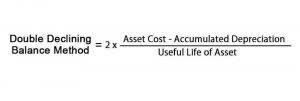Definition, Explanation and Examples

The Accounting Equation is the foundation of double-entry accounting because it displays that all assets are financed by borrowing money or paying with the money of the business’s shareholders. The purpose of the accounting equation is that it lays the framework for the accounting processes and ensures integrity in financial transaction recording. It plays a crucial role in preparing financial statements that enables analyzing a firm’s financial health while ensuring transparency in accounting processes.
Accrual vs Cash Basis Accounting: Choosing the Right Accounting Method
- The capital would ultimately belong to you as the business owner.
- Other names used for this equation are balance sheet equation and fundamental or basic accounting equation.
- Its concept is also to express the relationship of the balance sheet items which are assets, liabilities, and owner’s equity.
- Both liabilities and shareholders’ equity represent how the assets of a company are financed.
- (Note that, as above, the adjustment to the inventory and cost of sales figures may be made at the year-end through an adjustment to the closing stock but has been illustrated below for completeness).
- It shows that assets owned by a company are coupled with claims by creditors and lenders (liabilities), and by the owners of the business (capital).
- The accounting equation is fundamental to the double-entry bookkeeping practice.
The accounting equation is often expressed as an accounting formula and states that the sum of liabilities and equity is always equivalent to the total assets of the organization. It is the fundamental foundation of accounting that ensures financial statement accuracy. Current assets include cash and cash equivalents, accounts receivable, inventory, and prepaid assets. Current liabilities are short-term financial obligations payable in cash within a year. Current liabilities include accounts payable, accrued expenses, and the short-term portion of debt. The owner’s equity is the balancing amount in the accounting equation.
How to show the effect of transactions on an accounting equation?
As this is not really an expense of the business, Anushka is effectively being paid amounts owed to her as the owner of the business (drawings). The business has paid $250 cash (asset) to repay some of the loan (liability) resulting in both the cash and loan liability reducing by $250. $10,000 of cash (asset) will be received from the bank but the business must also record an equal amount representing the fact that the loan (liability) will eventually need to be repaid. Receivables arise when a company provides a service or sells a product to someone on credit. Get instant access to lessons taught by experienced private equity pros and bulge bracket investment bankers including financial statement modeling, DCF, M&A, LBO, Comps and Excel Modeling.

Which financial statement involves all aspects of the accounting equation?
Thus, the resulting balances of both sides will always be equal. Firms can get the data for total assets and total liabilities from the balance sheet which they can then use further in the accounting equation to determine the equity. These elements are basically capital and retained earnings; however, the expanded accounting equation is usually broken down further by replacing the retained earnings part with its elements.

A company has liabilities of $25,000 and assets of $35,000. What is the company’s equity?
We will now consider an example with various transactions within a business to see how each has a dual aspect and to demonstrate the cumulative effect on the accounting equation. Capital essentially represents how much the owners have invested into the business along with any accumulated retained profits or losses. The capital would ultimately belong to you as the business owner. In the case of a limited liability company, capital would be referred to as ‘Equity’.
- The total change on the left side is always equal to the total change on the right.
- They include accounts payable, tax payable, accrued expense, note payable, pension fund payable, etc.
- The basic formula of accounting equation formula is assets equal to liabilities plus owner’s equity.
- Assets are resources the company owns and can be used for future benefit.
- The accounting equation uses total assets, total liabilities, and total equity in the calculation.
Apple performs $3,500 of app development services for iPhone 13 users, receives $1,500 from customers, and bills the remaining balance on the account ($2,000). Assets are resources the company owns and can be used for future benefit. Liabilities are anything that the company owes to external parties, such as lenders and suppliers. Stockholders can transfer their ownership of shares to any other investor at any time. Owners’ equity typically refers to partnerships (a business owned by two or more individuals).
A liability is considered current of they are payable within 12 months from the end of the accounting period, or within the company’s normal operating cycle if the cycle exceeds 12 months. An asset is considered current if it is for sale, if it can be realized within 12 month from the end of the accounting period or within the company’s normal operating cycle if it exceeds 12 months. HighRadius Solution empowers organizations to experience enhanced efficiency by leveraging the best of the latest accounting technology.
Financial statements
As our example, we compute the accounting equation from the company’s balance sheet as of December 31, 2021. The monthly trial balance is a listing of account names from the chart of accounts with total account balances or amounts. Total debits and credits must be equal before posting transactions to the general fundamental accounting equation ledger for the accounting cycle. In the above transaction, Assets increased as a result of the increase in Cash. At the same time, Capital increased due to the owner’s contribution. Remember that capital is increased by contribution of owners and income, and is decreased by withdrawals and expenses.
- However, each partner generally has unlimited personal liability for any kind of obligation for the business (for example, debts and accidents).
- The accounting equation equates a company’s assets to its liabilities and equity.
- Because of the two-fold effect of business transactions, the equation always stays in balance.
- Owners’ equity typically refers to partnerships (a business owned by two or more individuals).
- The remainder is the shareholders’ equity, which would be returned to them.


